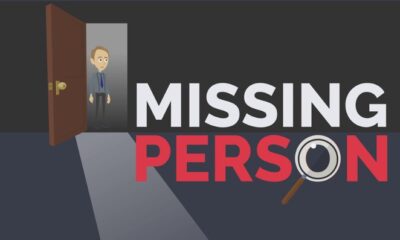Best of Johannesburg
Fact or Fear: How South Africans Can Decode Conflict Reporting in 2025

When news feels more frightening than informative
In South African cafés, on commuter trains, and over dinner tables, South Africans are encountering news reports that look more like alarm bells than balanced coverage. When stories about conflict, migration, political unrest, or social tension hit our feeds, how do we tell whether we’re reading fact-based reporting or being nudged into fear? With today’s media climate shaped by fast-moving algorithms, AI-generated visuals, and polarised commentary, this question matters more than ever.
Why this moment matters
In 2025, the spotlight is squarely on the integrity of information. In September, the city hosted the M20 Summit in Johannesburg, where journalists, policymakers, and civil society issued the Johannesburg M20 Declaration, demanding that media freedom and information integrity become global priorities. The declaration highlighted how mis- and disinformation are amplified by AI platforms and stressed that independent journalism cannot be taken for granted.
At the same time, the Press Council of South Africa renewed calls for the media to meet the standards of the country’s Press Code of Ethics. That Code affirms that media must report truthfully, fairly, and in context while avoiding propaganda for war or incitement of violence.
If you live in South Africa, you’re navigating this changing terrain every time you open your phone or read the morning paper. Knowing how to distinguish fearmongering from robust journalism helps you stay informed rather than unsettled.
What genuine conflict reporting looks like
Here are the hallmarks of reporting you can rely on:
-
Verified, multiple sources: The best reports draw on two or more independent, reputable sources rather than unverified tips or lone rumours.
-
Calm, objective tone: Instead of shouting alarmist slogans, the language remains neutral, letting facts speak. Terms are precise rather than inflammatory.
-
Context and background: Good journalism explains the roots of a conflict, the historical or political factors, and the impact on people, not just the headline grab.
-
Balance and diverse voices: Coverage includes perspectives of all stakeholders, local residents, authorities, marginalised groups, and NGOs, rather than a single narrative.
-
Clear distinction between fact and opinion: Analysis, commentary, or speculation is clearly labelled as such; it doesn’t masquerade as fact.
These criteria map closely to the Press Code’s requirement that news should “be presented in context and in a balanced manner without intentional or negligent departure from the facts.”
What fear-driven coverage tends to do
By contrast, fear-based reporting often has these red flags:
-
Sensationalist language or visuals: Dramatic headlines, vivid imagery with little context, and sweeping statements designed to provoke shock.
-
Unverified claims: Broad assertions lacking data or credible sourcing, or relying on anonymous posts on social media.
-
Bias and stereotyping: Coverage that reinforces negative stereotypes of certain communities or frames conflicts in simplistic us-versus-them terms.
-
Hidden agendas: The story seems to exist to boost clicks, push a political line, or stir emotions rather than inform.
-
Missing or skewed context: Omission of important background facts, or ignoring alternative viewpoints, leaving the reader with a distorted view of reality.
Practical steps for you, the reader
Here’s a checklist you can keep in mind:
-
Check the source: Is the outlet a recognised member of the press-regulatory body? Does the article have a byline and tell you who gathered the facts?
-
Cross-referencing helps: Look for the same story in other reliable outlets or trace it to original government, NGO, or research publications.
-
Check for evidence: Are statistics or sources clearly cited? Is there transparency about what is known and what remains uncertain?
-
Pause before sharing: If something seems alarming but lacks detail or source clarity, hold off on sharing until you’ve verified.
-
Question the motive: Ask why this story was published. Informing the public? Or to stir fear, profit, or polarization?
In 2025, this kind of media literacy isn’t just helpful; it’s essential, especially as AI-generated content and platform algorithms complicate what we see.
A local dimension
In South Africa, we know that public trust in the media is fragile. The markets for independent journalism are under pressure, online disinformation campaigns are increasingly sophisticated, and digital platforms shape what ends up in our feeds. The Johannesburg M20 Summit reaffirmed that information integrity is a public good. Around Joburg and beyond, news consumers who apply a critical lens play a vital role in helping democracy stay healthy.
A fresh encouragement
Rather than fear every alarming headline, consider this a moment of empowerment. By developing these habits, you become more than a passive reader; you become part of a media-literate community. Your questioning, your cross-checking, and your refusal to spread unverified alarms help raise the standard of public debate. And that matters in Johannesburg, across South Africa, and beyond.
Also read: Free Legal Help in Joburg and South Africa: Where to Go and What to Know
Follow Joburg ETC on Facebook, Twitter, TikT
For more News in Johannesburg, visit joburgetc.com
Featured Image: Source PR



























